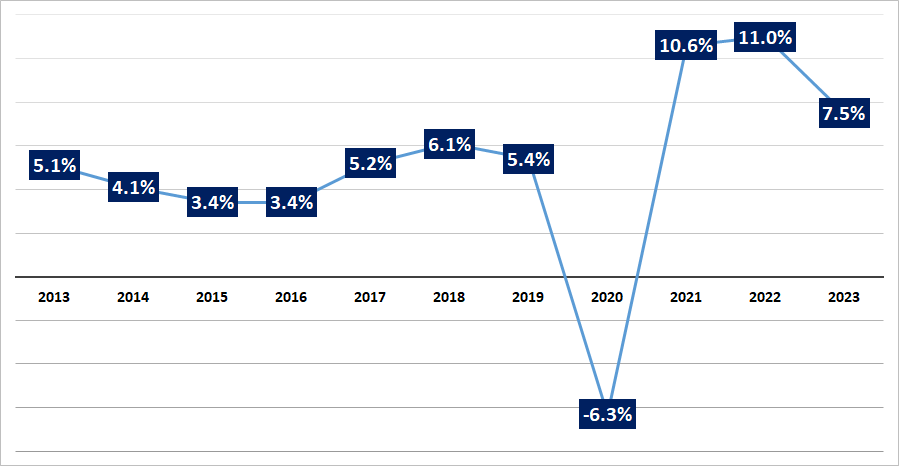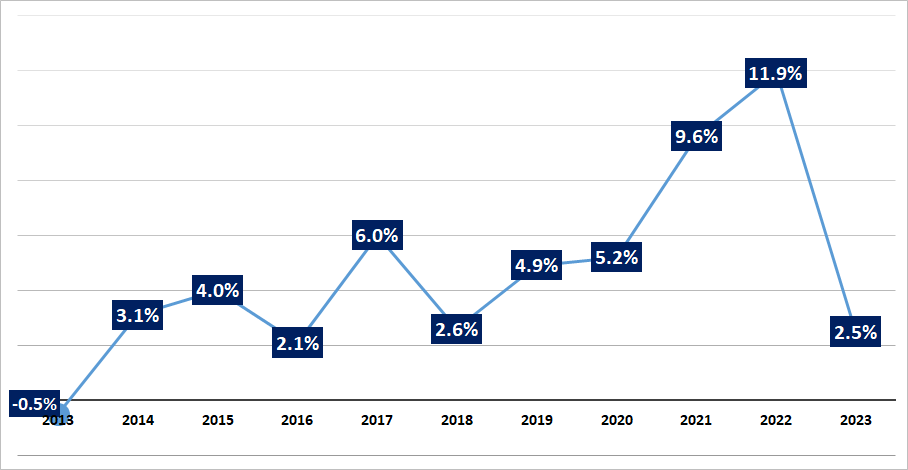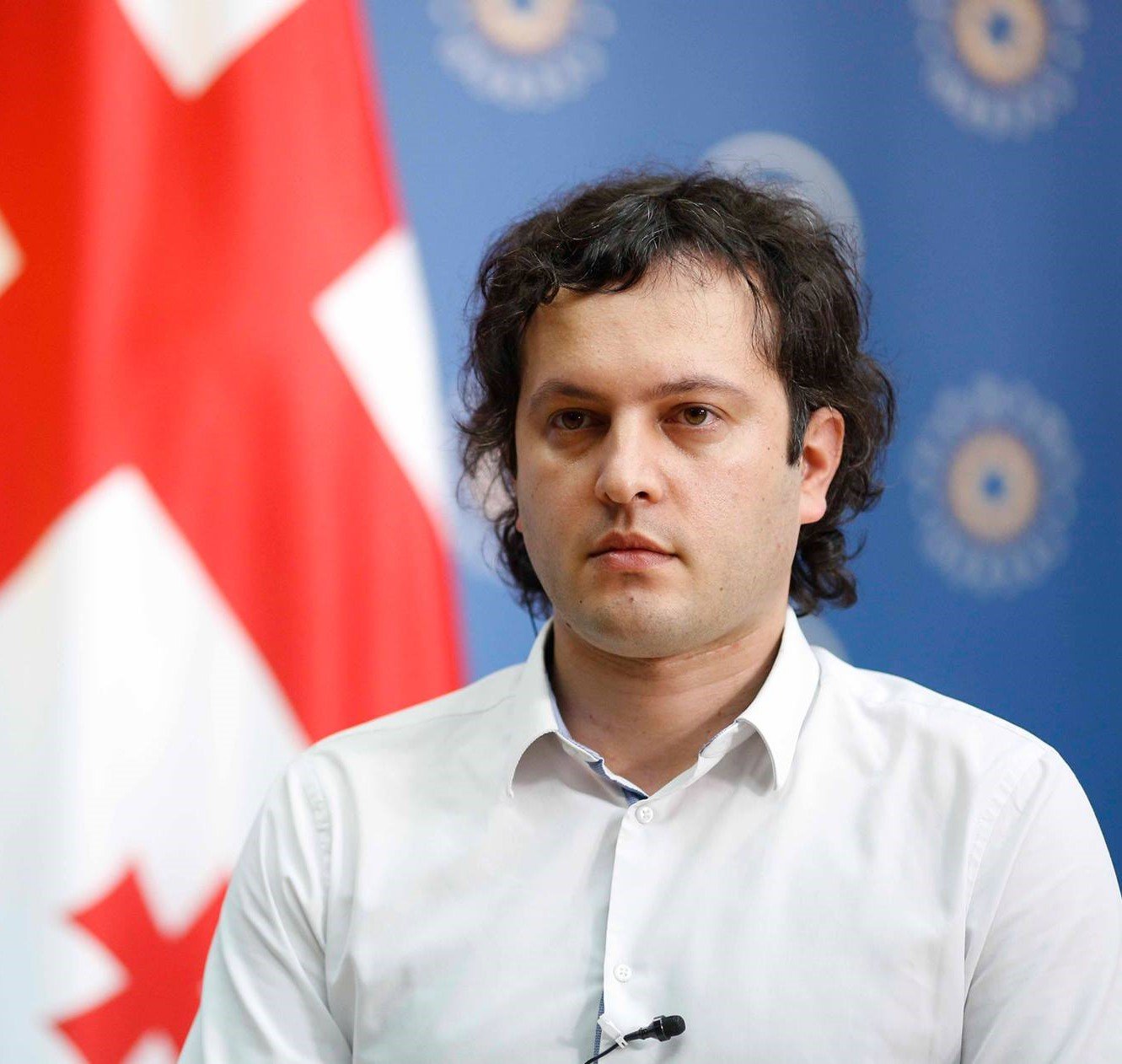Irakli Kobakhidze: “The economy grew from GEL 28 to GEL 80 billion under the governance of the Georgian Dream.”
Verdict: FactCheck concludes that Irakli Kobakhidze’s statement is HALF TRUE.
Whilst the nominal economy of Georgia constituted GEL 27.9 billion in 2012 and increased by 190% over time, subsequently reaching GEL 80.2 billion by 2023, the real economy grew by a significantly lower amount of 70%, due to the accompanying inflation, even reaching double digits at certain points in time.
Solely analysing nominal income trends without incorporating the purchasing power into the calculations fails to provide valuable information. Theoretically, the monetary income may increase but the purchasing power could deteriorate. Although the economy has never contracted under the governance of the Georgian Dream political party (excluding the one instance of a decrease in 2020), real growth substantially lagged behind its nominal counterpart.
Citing correct nominal data without further explanation may lead to a misinterpretation that the real quality of life also increased by 190% since 2012. The aforementioned interpretation is inaccurate as the real economy grew by a significantly lower amount of 70%. Considering the vast contextual discrepancy between nominal and real increases, as well as the large difference between the two outcomes, FactCheck concluded that Irakli Kobakhidze’s statement is HALF TRUE.
Analysis
During the launch of the election campaign and the inauguration of the new central office on 16 July, Prime Minister Irakli Kobakhidze stated: “The Georgian Dream brought about significant changes to Georgia not just in terms of democracy, but also economically over the past 12 years - the economy grew from GEL 28 to GEL 80 billion during this period.”
The nominal economy of Georgia constituted GEL 27.9 billion in 2012, subsequently increasing by 2.9 times, reaching GEL 80.2 billion in 2023. The GEL-denominated nominal economy expanded by 190% over these 11 years.
Notably, a 190% increase in the nominal economy does not necessarily suggest that the population became richer by the same amount, on average. The GDP would have had to increase by 10% for the aforementioned outcome. However, a double-digit growth only occurred in 2021 and 2022. The real economy increased by 70% from 2013 to 2023. The primary underlying factor for the discrepancy between the nominal and real growth was inflation.
Graph 1: GDP Growth Rate

Source: National Statistics Office of Georgia
Market economies are typically characterised by inflation as consumer prices increase annually. Whilst the prices of certain products may decrease, the overall tendency is upward, resulting in changes in the value of money. For reference, GEL 100 could purchase more products and services five or ten years ago as compared to today. This phenomenon is common to most of the currencies worldwide.
Consumer prices increased by an average of 64.3% from 2012 to 2024, suggesting that the 2012 economy amounted to GEL 45.9 billion when adjusted to 2023 prices. Thus, equalising the aforementioned prices indicates that the real economy expanded from GEL 46 billion to GEL 80 billion, rather than from GEL 28 billion to GEL 80 billion.
Graph 2: Average Annual Inflation

Source: National Statistics Office of Georgia
The percentage change in the amount of purchasable goods and services with the same income as compared to the previous period is more important to the country and its population than the monetary increase in its overall income. Whilst the nominal income may increase by multiples of 1,000% annually during hyperinflation, such phenomena are typically accompanied by the population falling in absolute poverty.
Georgia has never experienced hyperinflation since the 1990s. Furthermore, whilst the economy went through periods of decline only twice - in 2009 and 2020, it is still inaccurate to portray nominal growth as equivalent to real growth. The real economy grew by 70% from 2013 to 2023, rather than 190%.
Graph 3: Nominal and Real Economy Growth Rates from 2013 to 2023 (2012 = 100%)

Source: National Statistics Office of Georgia
Citing correct nominal data without further explanation may lead to a misinterpretation that the real quality of life also increased by 190% since 2012. The aforementioned interpretation is inaccurate as the real economy grew by a significantly lower amount of 70%. Considering the vast contextual discrepancy between nominal and real increases, as well as the large difference between the two outcomes, FactCheck concluded that Irakli Kobakhidze’s statement is HALF TRUE.








